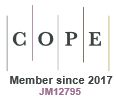Just Accepted
This article has been peer reviewed and accepted for publication. It is in production and has not been edited, so may differ from the final published form.
Integrative physiological and transcriptome analyses elucidate the effect of shading during the grain-filling stage of wheat ZY96-3
Abstract
In wheat cultivation, shading plays an important role in determining nutrient content and yield. However, the genetic mechanism underlying the effects of shading treatment on grain filling remains unclear. Therefore, we performed phenotypic and transcriptome analyses on ZY96-3 wheat during grain development under normal and shaded conditions. Shading resulted in a significant decrease in grain size and thousand-grain weight. Correlation analysis revealed the strong effect of shading on the mean and maximum grain-filling rate and secondary grain-filling parameters R2 and R3. And shading reduced starch content and starch-related enzyme activity (including granule-bound starch synthase and soluble starch synthase). Transcriptomic analyses showed that shading mainly affected pathways related to photosynthetic antenna proteins, carbon fixation in photosynthetic organisms, and starch and sucrose metabolism. Sixteen genes related to photosynthetic antenna protein and carbon fixation pathways were first upregulated and then downregulated; whereas all differentially expressed genes (PetC, Fd, LFNR1, LFNR2, PC, PsbO, PsaG, and PSB28) in the photosynthetic antenna protein pathway belonged to electron transport chain proteins. Thus, shading treatment affects the physiological and molecular properties of grain development during the grain-filling stage. This study reveals new candidate genes (such as TaLFNR1-7A and TaFd-7A) for breeding wheat varieties with high photosynthetic efficiency in regions with insufficient light intensity.
FP25013 Accepted 25 March 2025
© CSIRO 2025



